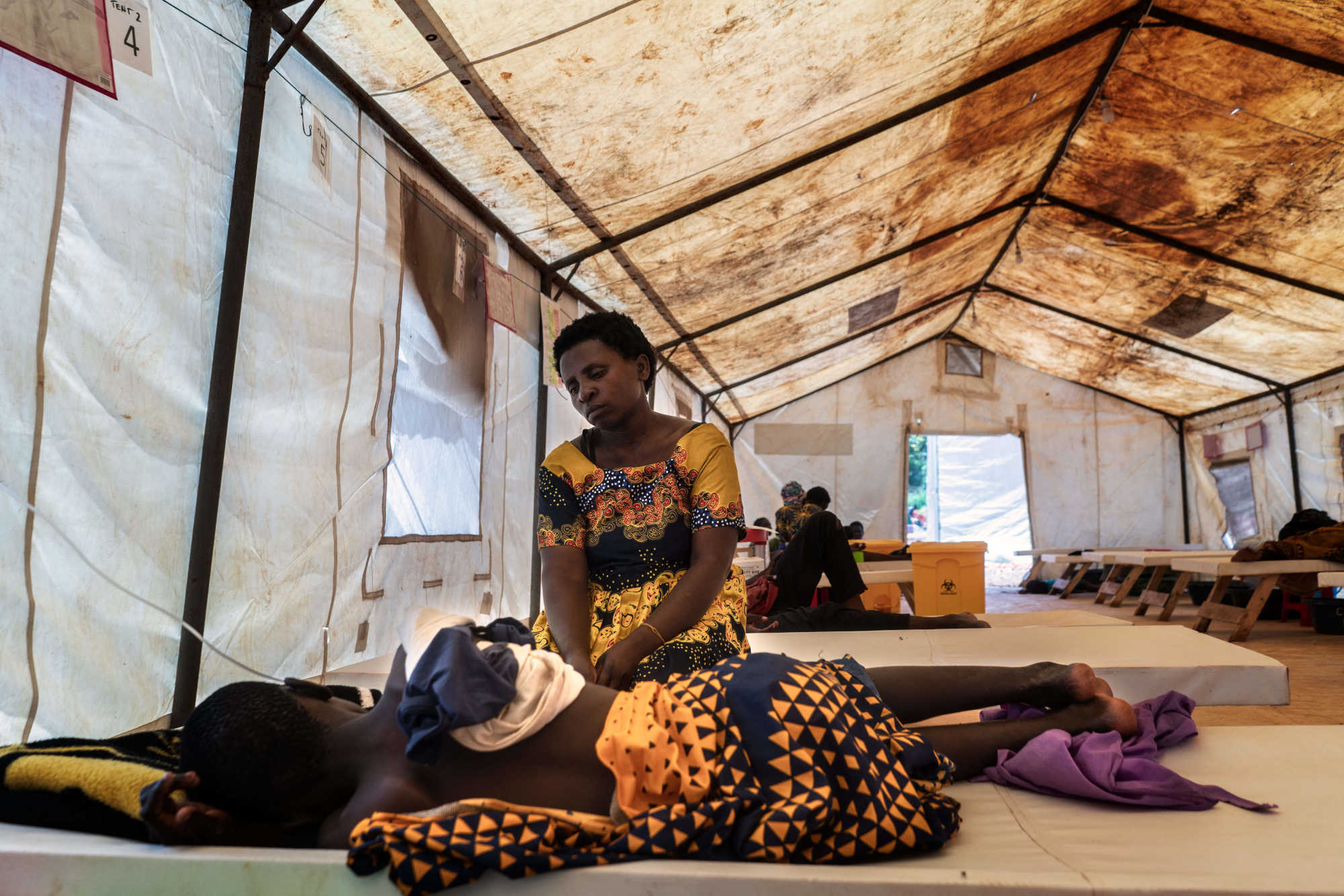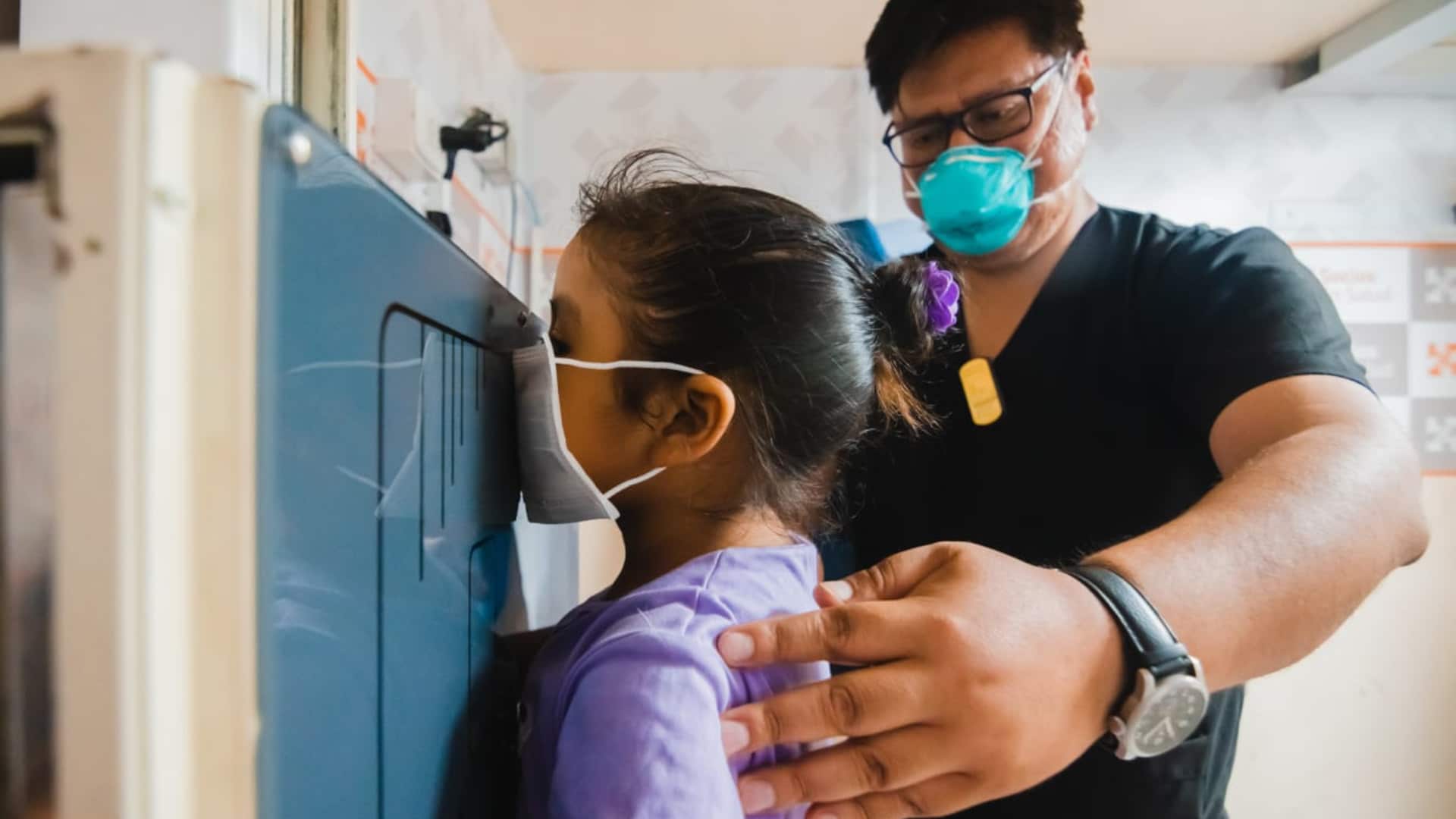The World Is Not Prepared for Another Cholera Wave
In March 2022, a lone case of cholera was detected in southern Malawi. Dan Kapombosola Banda wasn’t concerned. The year before, the entire country had recorded just two cholera cases, and Banda, the head of health and social services at the Malawi Red Cross Society, had other priorities.
The trouble began in August. Reports of sporadic outbreaks started arriving from northern Malawi. Soon, Banda was setting up makeshift tents outside of hospitals to treat an overflow of patients. Within months, cholera was widespread in every district of the country.
Overwhelmed health officials appealed to the International Coordinating Group, or ICG, a committee of experts that manages an emergency supply of various vaccines. They asked for doses of cholera vaccines to help stem the outbreak.
The ICG was able to honor that first request. But amid a global surge in cholera cases, the committee realized their stockpile would not last. In October 2022, the ICG announced that countries should start giving people just one vaccine dose, instead of the standard two, in a bid to stretch existing supplies.
Still, they’ve been unable to keep up with demand, producing what one WHO spokesperson described to Undark as “an acute shortage.” Countries have struggled to contain outbreaks. In early 2023, for example, Malawian officials requested additional doses, hoping to vaccinate 6.3 million more people. This time, the ICG sent less than one-quarter the requested amount. By that point, the cholera outbreak had killed more than 1,700 people in Malawi.
It wasn’t supposed to be this way. Cholera is a terrifying disease; the Vibrio cholerae bacteria produces a toxin so strong that the body flushes out as much as one liter of water per hour, and, left untreated, cholera can kill a person in less than a day. Up to 4 million people grow sick with cholera each year, according to one estimate, and between 21,000 and 143,000 die.
But the infection is highly treatable: An oral rehydration solution of salt, sugar, and water can replace lost fluids and treat most cholera patients. For severely ill children and adults, an IV drip and antibiotics does the job. And cholera vaccines, costing as little as $1.50 per dose, offer robust protection for up to three years when two doses are given two weeks apart.
“The number of people dying from cholera should be close to zero,” concludes a recent report from the U.K. Humanitarian Innovation Hub. In 2017, the Global Task Force on Cholera Control, or GTFCC, an influential task force hosted at the World Health Organization, resolved to cut global cholera deaths by 90 percent by 2030.
Instead, cases are on the rise, probably fueled in part by the effects of a warming climate.
Researchers say that public health officials have all the tools necessary to stop cholera. So why has it been so hard to prepare for outbreaks?
Part of the answer, experts say, is that the recent surge of cholera cases was unexpected, catching public health organizations off guard. But at a time when biomedical researchers are spending billions to develop breakthrough cures for other diseases, the story of cholera also shows how logistical and coordination challenges, vaccine shortages, and funding shortfalls, combined with a neglect towards long-term solutions, have allowed an easily treatable disease to persist.
Global health organizations would prefer to focus on preventing outbreaks, said Julia Lynch, director of the International Vaccine Institute’s Cholera Program. Instead, she said, “we’re in a little bit of crisis response mode.”
Experts agree that a few straightforward strategies can dramatically cut down on cholera. Improved sources of clean water, better sanitation, and hygiene systems — often abbreviated as WASH — are vital to prevent outbreaks. When sanitation is not up to par, savvy deployment of vaccines can prevent and slow down cholera epidemics, and buy time to build WASH infrastructure.
But even with cheap, effective vaccines, public health officials have struggled to keep up with outbreaks.
In 2011, the WHO gave a stamp of approval to the world’s first oral cholera vaccine that could be used in emergency settings. Gavi, the global vaccine distributor, decided to stockpile the vaccine and distribute it to countries facing outbreaks. The supply began growing steadily.

At the time, cholera vaccination was reactive: An outbreak would occur, and global health organizations would send in vaccines to slow it down. Soon, though, some experts began to call for more preventative vaccination campaigns. The feeling among experts at Gavi and other organizations, Lynch said, was that otherwise they would “forever be chasing outbreaks.”
So Gavi, in a 2018 review, decided to change course: Along with providing vaccines for emergency use after an outbreak, the organization would also help countries conduct pre-emptive vaccination campaigns, targeting at-risk populations.
This strategic move towards prevention meant that many more vaccines would be needed. EuBiologics, the South Korean company that, as of this year, produces all of the global stockpile’s cholera vaccine supply, secured funding from the Bill and Melinda Gates Foundation in 2019 to ramp up production.
By 2022, the vaccine stockpile had reached an all-time high of 34 million doses. But cholera outbreaks were about to get worse.
“No one expected or predicted the number of outbreaks that occurred in the last year,” said Lynch. In fall 2022, more countries than usual reported outbreaks: The disease returned to Haiti (where it had been absent for three years, and declared eradicated just months earlier) and Lebanon (where no cases had been seen in almost 20 years), along with 28 other countries. Vaccine supplies could not keep up with the unexpected demand.
In Malawi, those shortages soon had an impact.
Yves Manzi Bizimana, a medical coordinator from Doctors Without Borders who worked in Malawi during the outbreak, said the organization was unable to vaccinate any patients during a cholera control campaign this past January because of the vaccine shortage, despite a peak in cases during that time.
When doses eventually did arrive, they had been slowed by logistical challenges and paperwork, according to Manzi Bizimana.
To receive vaccines from the ICG, countries have to justify their need, said Mike Nenani Chisema, Deputy Director of the Preventive Health Services at Malawi’s Ministry of Health. Malawian officials first asked for a new round of doses in January, but weren’t able to finalize their request until mid-February. It was “was a back-and-forth process, hence it took that long,” Chisema wrote in an email.
Even once ICG received the final request, it took almost two months for the doses to land in Malawi, according to a timeline provided by Chol Yur, a WHO official. That’s far longer than the typical turnaround time for the ICG to approve and send emergency cholera vaccines. (The ICG media team provided details about the vaccine delivery timeline but did not respond to follow-up questions about why it took so long to deliver those doses.)
When the vaccines did come, not everyone thought they were distributed effectively. According to Manzi Bizimana, the country’s health ministry adhered to their initial plans — drafted months earlier — instead of sending the vaccines to where they were most needed. (Chisema, the Health Ministry official, did not respond to questions about the policy.)

Other countries have also faced delays, often caused by logistical snags like limited air cargo capacity or regulatory impediments to vaccine importation, according to a Gavi spokesperson. However, the organization said, there has been some improvement: This year vaccine shipments have arrived an average of 13 days after the original request.
Delays of any kind can have consequences. “The reality is that often with these reactive campaigns, the vaccine doesn’t even get there in time,” said Lynch, the IVI executive. By the time the doses arrive, she added, “the outbreak is waning.”
The dependence on vaccines, some experts say, is itself a failure — one that highlights the need for basic preventative measures that are known to eliminate outbreaks. Vaccines are “not a panacea,” said Sylvie Briand, the director of the Epidemic and Pandemic Preparedness and Prevention department at WHO. Instead, vaccines can be viewed as a stopgap solution to halt outbreaks and a tool that can buy local authorities time to build reliable WASH systems — the failure of which is the ultimate cause of cholera.
If vaccines are a way to extinguish a burning house, WASH systems are the tools to make sure that the house isn’t continuously catching fire. A functioning WASH system provides clean water from a tap, a safe place to defecate, and facilities for hand washing and bathing. Bringing these essential services together can break the chain of cholera transmission and subsequent outbreaks. But, experts say, attempts to implement those systems have been hampered by fundraising issues, natural disasters, and coordination challenges among health and public works ministries.
Even some areas seeing initial success have faltered. Just a few years ago, Malawi was on the road to eliminating cholera. The country had built up water systems and sanitation facilities. About 80 percent of the population had access to clean sources of drinking water and sanitation facilities like latrines, said Deborah Muheka, Malawi program coordinator at Global Water Partnership, a network of organizations focused on water management.
Then, in 2019, Cyclone Idai hit Malawi, destroying WASH systems across the country. Another cyclone the next year destroyed about 54,000 latrines and 300 boreholes, said Muheka.
Building, or rebuilding, a WASH system is a cumbersome and costly affair. Amber Hyman, an independent cholera researcher, said vaccines are “easier to conceptualize,” whereas, WASH “is a much larger undertaking, and it’s far more expensive, too.”
Experts say a few factors have made it difficult to get WASH off the ground. Part of it is simply scale: Reports from the World Bank suggest that Africa needs at least $30 billion each year to be able to meet the goal of providing water and sanitation for all — more than twice the current amount that aid agencies and others provide. Implementing systems can be logistically challenging. And, as in Malawi, climate change-enhanced weather events have created a vicious cycle, destroying WASH infrastructure and then leaving behind precisely the kind of flooded conditions that can incubate a cholera outbreak.
Some international aid veterans also say that WASH has suffered from an entrenched lack of willingness among donors to sustainably fund preventive work, which is seen as less glamorous. “It’s always much more complicated to have prevention activity to be funded than treatment,” said Philippe Barboza, a World Health Organization official who leads the Global Task Force on Cholera Control.
Support Undark MagazineUndark is a non-profit, editorially independent magazine covering the complicated and often fractious intersection of science and society. If you would like to help support our journalism, please consider making a donation. All proceeds go directly to Undark’s editorial fund.
|
It doesn’t help that cholera mostly afflicts the poorest communities. “To put it somewhat less diplomatically, it’s not being done because these are poor people,” said John Oldfield, CEO of Accelerate Global, a global water advocacy initiative based in Washington, D.C. “It’s the poor rural women who are suffering disproportionately from a lack of water, a lack of sanitation, a lack of hygiene.”
Unlike straightforward activities like a vaccination campaign or the establishment of cholera treatment centers, WASH has multiple moving parts and “lacks a clear ‘tool’ for donors to easily attach funding to,” according to the recent report from the U.K. Humanitarian Innovation Hub.
For the time being, global cholera control groups are left putting out fires, rather than doing the work to stop them from starting in the first place. Experts are unsure whether the surge in outbreaks will continue or die down. “I don’t think that anyone knows whether the kind of outbreak season or year that was seen last year is going to become the new norm, or whether it’s an outlier,” said Lynch.
Organizations are bracing for the possibility of more outbreaks, and looking for ways to increase the vaccine supply, although options are limited in the short term. A recent report from Gavi expects an increase in cholera vaccine demand in the coming years, averaging at least 85 million doses every year between now and 2030. And many experts believe that climate change will make matters worse, by exacerbating the droughts and storms that can spark outbreaks. “As long as these extreme climatic events continue to happen, extreme cholera events will also continue to happen,” said Lynch.
EuBiologics, the vaccine manufacturer, is ramping up production to close the gap. And new manufacturers like the South African drugmaker Biovac and the Indian pharmaceutical giant Bharat Biotech are also in the process of producing new cholera vaccines, and an optimistic timeline might have doses ready in a few years. “There is some light at the end of the tunnel,” said Barboza.
In Malawi, at least, the outbreak has finally subsided. As of the first week of July, the country was reporting only one new case, one suspected case, and zero deaths, with cholera under control in 20 of 29 districts — for now.
UPDATE: This story has been updated to include current estimates of the annual number of cholera deaths and infections worldwide.
Pratik Pawar is an independent science journalist based in India. His work has been published in Science News, Discover, The Wire, and The Washington Post, among others.











